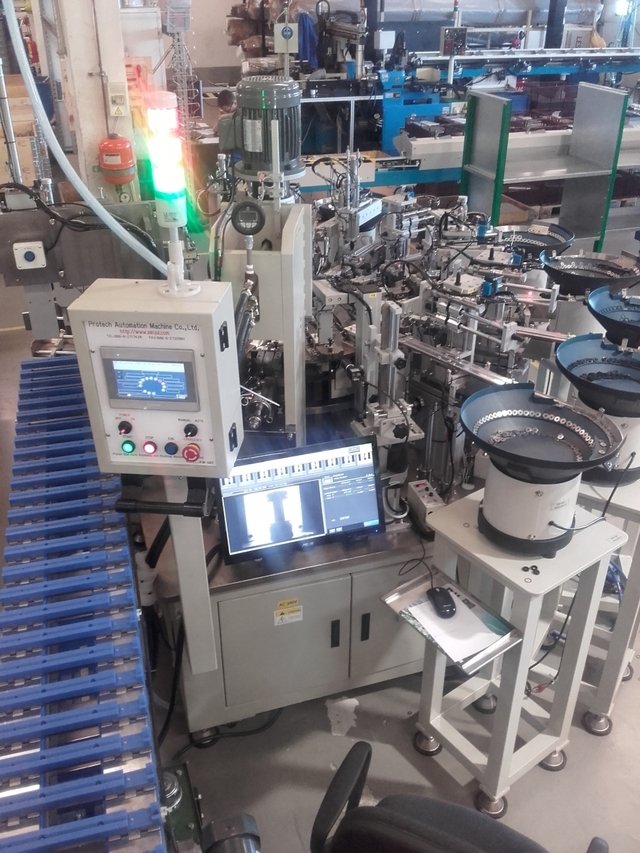Triscan has been the co-owner of a gas spring factory in Latvia for more than 6 years. Both sales and the number of employees has increased steadily over the years, and the introduction of new production technologies as well as the development of a new type of gas spring make us look forward to the future. Read more about these new initiatives here.
In the quest for competitiveness, price and quality are important parameters. Particularly in Western countries, where labor is very expensive by comparison, automated processes have become necessary in order to stay competitive. The automated processes come with the benefit of the quality improvements that usually go hand in hand with automation. One of the most recent initiatives in our production process is the automation of the assembly of the gas spring piston. This is one of the more complicated and time-consuming processes as it involves a total of 9 workflows. Our new production line can produce 600 pistons/hour, which previously required two working hours. To ensure the quality completely, a visual quality control of every gas spring is carried out. If the piston is not assembled correctly, the machine will stop immediately. We were curious to see if the new piston assembly line put into operation after the end of the second quarter of 2018 would meet expectations - we are glad to have found out that it does. Here you can watch a video the new collection process for stamps.

The new production line for assembly of the gas spring piston
Painting is another production process that is about to be optimized. On the one hand, the capacity has become too small and, on the other, the development of new technologies has allowed us to make both time (efficiency) and quality improvements. In the third quarter of 2018, the German Dürr Systems AG will commission a new painting line for more than 800,000 euros. This is a system for two-component wet paint with water-based paint. With the new plant, the capacity increases from 0.8 million units/year in three-shift operation to 2.25 million units/year. As a result, the painting line can now switch to a two-shift system.
In addition to the optimization of production processes, we also keep a critical eye open in order to be able to recognize and enforce possible improvements in the structural design of gas springs. An example of this is our own "inner coil" gas spring, which we developed because the OE solution did not prove to be optimal - and because the implemented changes also resulted in an improvement in production and price. In the original version, called an "outer coil" gas spring, a spring is placed on the outside surface of the gas spring cylinder. This type is used in cases where additional force is required to enable the gas spring to open a trunk lid. In our new solution, we have succeeded in achieving the same purpose with a spring located inside the cylinder of the gas spring. Another advantage of our solution is that the gas spring, in contrast to the original version, is easy to clean.

Triscan inner coil gas spring (CAD drawing)

Triscan inner coil gas spring - for Mercedes Benz W251

Triscan outer coil gas spring - for Mercedes Benz W251








